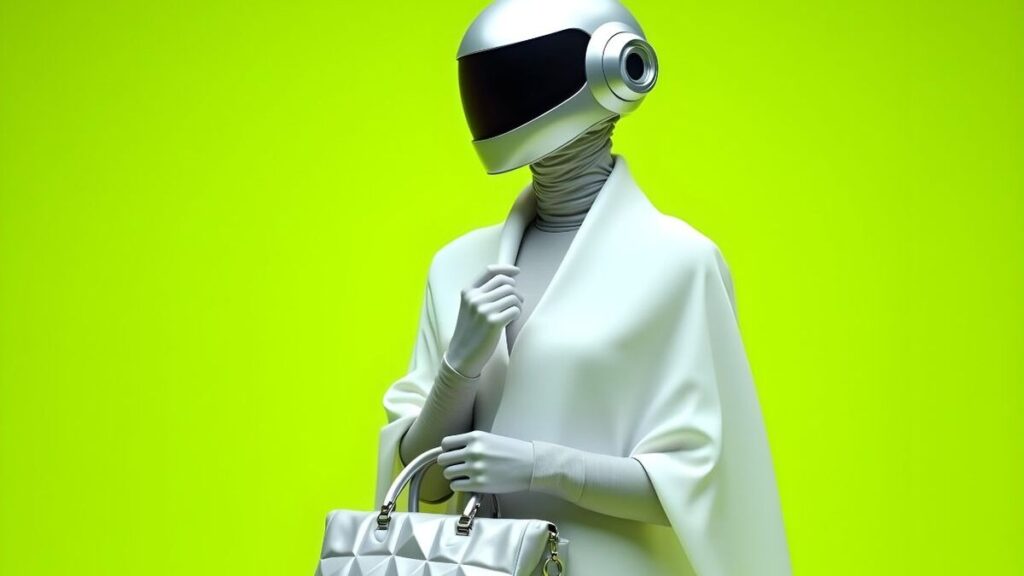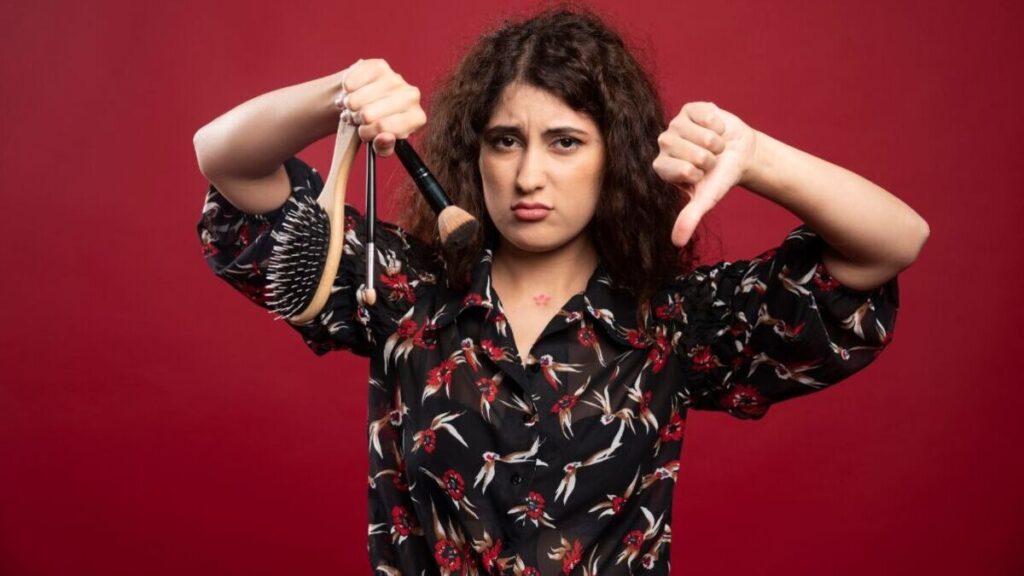Introduction: The Fusion of Style, Craft, and Technology
Fashion has always been a living reflection of society—shaped by culture, economy, and technology. AI Designs Are Revolutionizing Real Life Fashion, ushering in an era where artistry meets algorithms. Once armed solely with sketchbooks and scissors, designers now turn to machine learning and neural networks for inspiration and production.
- Introduction: The Fusion of Style, Craft, and Technology
- What Is AI in Real Life Fashion Design?
- How AI Is Enhancing Fashion Creativity
- Automation in Craftsmanship
- Sustainability: AI's Role in Eco-Friendly Fashion
- Style Meets AI: The Rise of Smart Fashion
- Customization and Personalization: A New Era of Tailoring
- The Retail Revolution: AI-Driven Shopping Experiences
- Challenges of Integrating AI in Fashion
- AI in Haute Couture: Bridging High Fashion and Tech
- The Role of AI in Bridging Cultures Through Fashion
- The Future of AI in Fashion Design
- Step-by-Step: Implementing AI in Your Fashion Brand
- Conclusion: Merging Artistry and Algorithms
But what does this mean for the industry’s future? Can AI truly mimic or enhance human creativity? To answer this, we’ll explore how AI influences every facet of fashion, from design and tailoring to retail and sustainability. With technology as a partner, the once-clear lines between craft and computational precision are blurring.
What Is AI in Real Life Fashion Design?
Artificial Intelligence (AI) in fashion involves using advanced algorithms and machine learning tools to streamline and innovate the real life fashion process. Think of AI as the creative assistant that never sleeps.
The Basics of AI in Fashion
At its core, AI analyzes data, identifies trends, and predicts consumer behavior. By combining historical data with emerging trends, designers can create pieces that resonate with modern consumers. AI doesn’t just speed up processes—it transforms them.
Standard AI Tools Used in the Industry
From IBM Watson’s predictive analytics to platforms like Google’s Deep Dream, AI tools empower designers to create extraordinary fashion. Meanwhile, AI-powered platforms like Clo3D simulate virtual garments, enabling precise designs without physical samples.
How AI Is Enhancing Fashion Creativity
Human imagination thrives on inspiration, and AI provides a nearly infinite reservoir of ideas. By analyzing countless patterns, textures, and cultural designs, AI acts as both a muse and a tool.
AI-Driven Design Inspirations
AI algorithms process vast data sets to generate novel designs. Imagine a designer inspired by Renaissance art and modern streetwear—AI can merge these styles seamlessly, presenting fresh concepts that might take months for a human to develop.
Personalization Through Data
Consumer preferences are more complex than ever. AI analyzes individual tastes, past purchases, and even social media activity to craft personalized designs. Whether it’s a wedding dress or sneakers, AI ensures the final product is tailor-made.
Automation in Craftsmanship
Real life fashion isn’t just about the final look—it’s about how it’s made. AI plays a critical role in automating the crafting process without sacrificing quality.
AI-Powered Textile Production
AI technology is revolutionizing textile creation, enabling precision weaving and dyeing techniques. Machine learning algorithms detect defects during production, ensuring impeccable fabric quality.
Balancing Efficiency and Artistry
While automation enhances efficiency, the human touch remains invaluable in certain areas. Designers are now pairing AI-driven tools with traditional methods, ensuring the craft retains its soul while benefiting from technological precision.
Sustainability: AI’s Role in Eco-Friendly Fashion
The fashion industry’s effects on the environment have drawn increasing concern. AI Designs Are Revolutionizing Real Life Fashion by addressing sustainability challenges head-on.
Reducing Waste with Predictive Analytics
AI helps predict demand accurately, reducing overproduction—a major contributor to waste. Brands like H&M are already leveraging AI to optimize inventory management.
Sustainable Fabric Innovations
Through AI, researchers are developing biodegradable and recycled fabrics. Imagine wearing clothing made from AI-engineered algae fibers or 3D-printed materials that leave zero waste behind.
Style Meets AI: The Rise of Smart Fashion
What happens when aesthetics meet technology? Smart real life fashion emerges, combining sleek designs with functionality.
Wearable Tech and Aesthetic Design
AI seamlessly blends technology with style, from fitness trackers embedded in jackets to LED-lit dresses. Brands like Levi’s and Google’s Project Jacquard illustrate how this partnership enhances daily life.
Real-Life Examples of Smart Clothing
Take Tommy Hilfiger’s smart clothing line, which uses AI to track user preferences. Or consider adaptive shoes that automatically adjust their fit—this isn’t just innovation; it’s the future of style.
Customization and Personalization: A New Era of Tailoring
In an era where consumers crave individuality, AI Designs Are Revolutionizing Real Life Fashion by making customization more accessible than ever. Gone are the days of standard sizes and off-the-rack limitations—AI enables brands to deliver made-to-measure clothing at scale.
AI and Body Measurements
AI-driven tools like 3D body scanning apps analyze unique body dimensions with unmatched precision. This data ensures a perfect fit for each customer. For example, companies like MTailor use AI to create perfectly tailored shirts and suits based on smartphone scans, eliminating the guesswork.
On-Demand Manufacturing
On-demand manufacturing minimizes waste and maximizes efficiency. Using AI, brands can create custom pieces only after placing an order. This approach not only caters to individual tastes but also reduces the environmental impact of mass production.
The Retail Revolution: AI-Driven Shopping Experiences
Thanks to AI, shopping has become more interactive and personalized. From virtual fitting rooms to AI-based style assistants, retail is transforming digitally.
Virtual Try-Ons and Styling Apps
AI-powered platforms allow customers to try clothes virtually before purchasing. Apps like Zeekit and Vue.ai use augmented reality to let users see how an outfit looks on their own body, saving time and improving the shopping experience.
AI-Powered Trend Forecasting
Retailers can now anticipate trends before they happen. By analyzing social media patterns and consumer behavior, AI predicts what styles will dominate future seasons. This ensures that brands stay ahead of the curve while offering customers what they truly want.
Challenges of Integrating AI in Fashion
Despite its advantages, integrating AI into real life fashion is challenging. Balancing technology with tradition and addressing ethical concerns remain significant hurdles.
Ethical Concerns in Creative Fields
Can an algorithm truly replace human creativity? Critics argue that AI-driven designs risk homogenizing real life fashion, stripping it of cultural and emotional depth. Additionally, questions about intellectual property arise—who owns a design created by AI?
Dependence on Technology vs. Human Creativity
More than relying on AI may stifle human creativity. While AI excels at analyzing data and suggesting ideas, the essence of design lies in the personal touch that only a human can provide. Striking this balance ensures a harmonious collaboration between technology and artistry.
AI in Haute Couture: Bridging High Fashion and Tech
The fusion of AI with high fashion has given rise to awe-inspiring creations that blend luxury with innovation. AI Designs Are Revolutionizing Real Life Fashion, even in the exclusive world of haute couture.
Examples of AI in Luxury Real Life Fashion
Renowned designers like Iris van Herpen have incorporated AI into their collections, creating ethereal, nature-inspired garments that push the boundaries of traditional couture. Meanwhile, Gucci has used AI to craft personalized shopping experiences, cementing its reputation as a forward-thinking brand.
How Couture Brands Leverage AI
Luxury brands use AI not just for design but for storytelling. By analyzing customer preferences, brands tailor marketing campaigns that resonate deeply with their audience, creating an emotional connection that enhances brand loyalty.
The Role of AI in Bridging Cultures Through Fashion
Real life fashion is a universal language, and AI is expanding its vocabulary by incorporating global influences seamlessly.
AI-Driven Design Collaborations
AI facilitates cross-cultural collaborations by analyzing design elements from diverse traditions. This allows designers to integrate global aesthetics into their work, celebrating diversity while maintaining authenticity.
Exploring Global Design Diversity
From African prints to Japanese kimonos, AI ensures that cultural heritage remains a source of inspiration. By preserving and innovating traditional designs, AI contributes to a more prosperous and inclusive fashion landscape.
The Future of AI in Fashion Design
The nexus of creativity and technology is where real life fashion is headed. As AI Designs Are Revolutionizing Real Life Fashion, it’s clear that this partnership is only just beginning.
What Lies Ahead for the Industry?
AI will continue to refine processes, making real life fashion more efficient, sustainable, and inclusive. Predictive analytics will shape trends precisely, while automation will reduce production times without compromising quality.
Predictions for the Next Decade
Expect to see more immersive shopping experiences, like AI-powered virtual reality boutiques. Meanwhile, innovations in AI-generated fabrics and designs will keep pushing the boundaries of what’s possible.
Step-by-Step: Implementing AI in Your Fashion Brand
If you’re considering integrating AI into your fashion brand, here’s how you can get started:
- Identify Your Needs – Do you need AI for design, manufacturing, or retail? Focus on one area first.
- Choose the Right Tools – Research AI platforms that align with your goals, such as Adobe Sensei for design or Supply Compass for production.
- Train Your Team – Ensure your team understands AI’s capabilities and limitations.
- Start Small – To gauge the efficacy of AI, start with a pilot project.
- Analyze Results – Continuously monitor and refine your AI strategy to ensure it aligns with your brand’s vision.
Conclusion: Merging Artistry and Algorithms
Integrating artificial Intelligence into the fashion world represents a monumental shift rather than a fleeting trend. AI Designs Are Revolutionizing Real Life Fashion, seamlessly combining technology’s precision with traditional design’s artistry. This collaboration bridges innovation and craftsmanship, enabling breakthroughs in sustainability, personalized fashion, and inclusivity.
While there are challenges, such as ethical considerations and the balance between human creativity and machine efficiency, the potential for transformation is immense. AI has opened doors to eco-friendly practices, dynamic customization, and futuristic designs. The real question is no longer if AI will influence fashion but how brands and designers will strategically utilize its capabilities to redefine the industry while preserving its creative soul.


